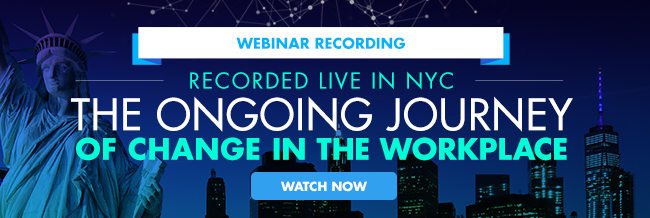4 Reasons Employees Hate Hot Desking (And How To Change Their Minds)


A quarter of employers worldwide already have flexible seating arrangements, and over half of the others plan to adopt flexible seating within the next three years, according to CBRE and CoreNet Global.
Hot desking is one of several types of flexible seating arrangements that have become more popular in recent years. When executed correctly, it can greatly improve space utilization and reduce costs. But some employees have grown cold to the idea.
Here’s why some employees hate hot desking and what you can do to help them warm up to it.
The 4 Biggest Hot Desking Complaints
1. It’s Difficult to Find Available Space
In offices that offer flexible working hours, employees will start their day anywhere from 7-10 a.m. Because hot desking works on a first-come, first-served basis, the employees who are more productive in the afternoon and arrive later in the morning will have fewer workspace options than their earlybird colleagues.
And if an employee who is usually one of the first at the office has a morning appointment and doesn’t make it in until after 9, they’ll likely discover their go-to workstation is already in use. Consequently, many times employees will have to start the day by walking through the office in search of an available place to call home for the day.
2. It’s Hard to Find Coworkers
Even in a traditional office environment with assigned workstations, you wouldn’t expect someone to be at their desk from the moment they walk in until they leave. But assigned seats at least give people a general idea of where to find you. With hot desking or other flexible seating arrangements, it can be a lot harder to track someone down.
You can’t just leave a note or ask around since there are no permanent desks or permanent neighbors. And when you’re trying to get answers to a pressing issue or meet a deadline, having no point of reference can be frustrating.
3. It Takes More Time to Get Set Up Each Day
Using laptops eliminates the need for wires and cords for the most part. But they do still need to charge. And sometimes employees need to hook up a second monitor or connect to the network directly instead of via WiFi.
In a hot desking environment, plugging in and setting up for the day can be a little more time-consuming — especially if the equipment at the workstation is in need of service or software updates. One of the headaches of hot desking is that when an employee encounters an issue with a workstation, they might opt to just move to another without notifying the facilities team. As a result, the issue doesn’t get resolved in a timely manner and other employees will discover the same problem.
4. It’s Harder to Build Relationships
When you sit next to the same people each day, you naturally form relationships with them. When you’re constantly moving around the office, you don’t have built-in deskmates. But there’s also an upside to this. Hot desking and other flexible seating arrangements expose employees to others they may not know as well, which can minimize office cliques and help employees build more relationships.
How to Help Employees Embrace Hot Desking
The fact is, the workplace of the future is an agile work environment, and there’s no going back. In a recent CBRE study, more than half of executives surveyed said they plan to implement some level of unassigned seating in the next three years.
Flexible seating arrangements like hot desking, hoteling or activity-based working come with many advantages. They can increase collaboration, improve productivity and even improve the employee experience—if they’re implemented correctly.
The key is to use the right approach and the right technology.
The combination of employee experience (EX) software, wayfinding and digital signage can resolve all of these common hot desking complaints.
With these technologies, employees don’t have to wander around looking for an open workspace. Instead, they can open an employee experience app when they arrive, browse through the list of available workstations and then use the wayfinding feature to navigate to the workspace. If an employee doesn’t have their phone on them, they can use a wayfinding kiosk.
The workforce can also use EX solutions to find their coworkers. When an employee arrives and “checks in” to their chosen desk for the day, it creates a digital footprint other employees can use to locate them.
These solutions also make it easy for employees to submit service request tickets. If a workstation has a glitchy monitor or a spotty internet connection, employees don’t have to just put up with it or move. They can use an employee experience app to quickly put in a service request so the facilities team can take care of the issue—and they can get right back to work.
Making the transition to hot desking can be tricky. You should expect some pushback from employees, at least at first. But by implementing the right technology, you can avoid the most common issues and make hot desking work for everyone.
